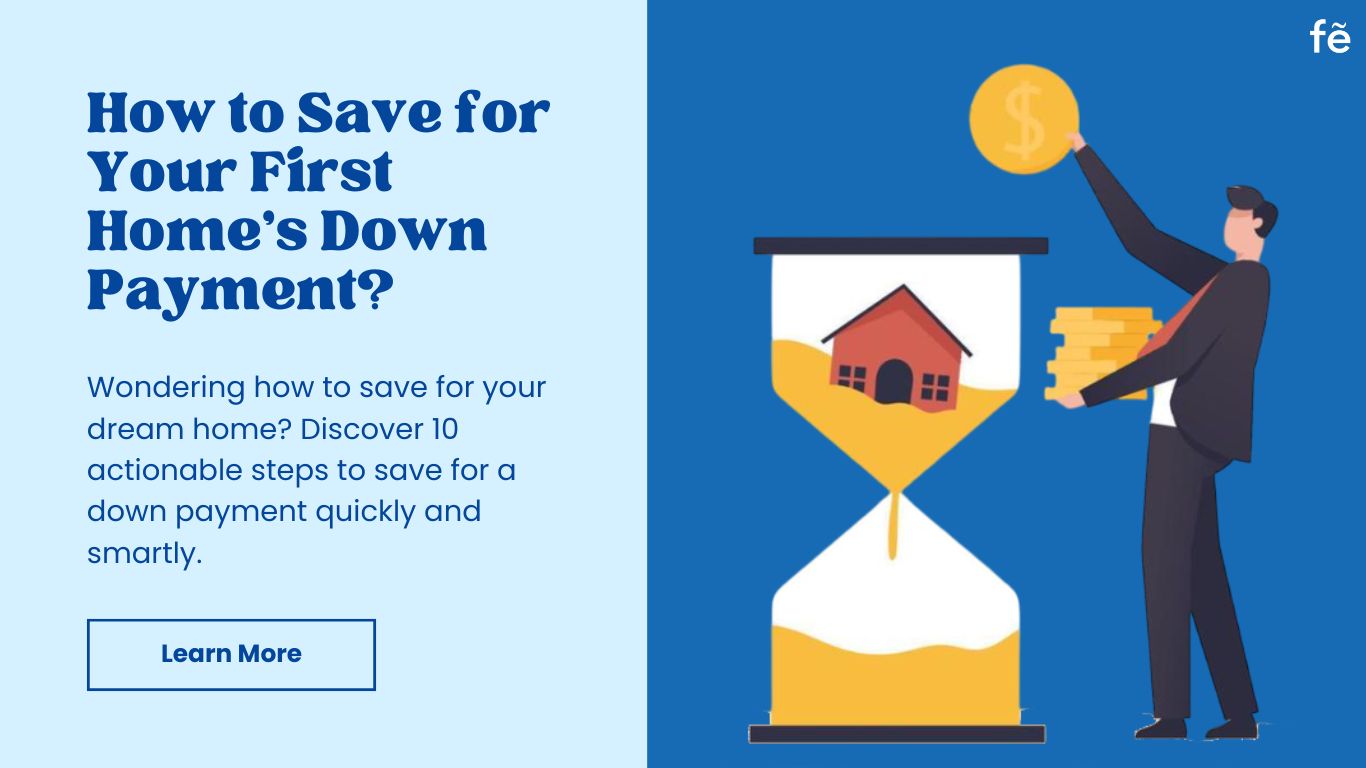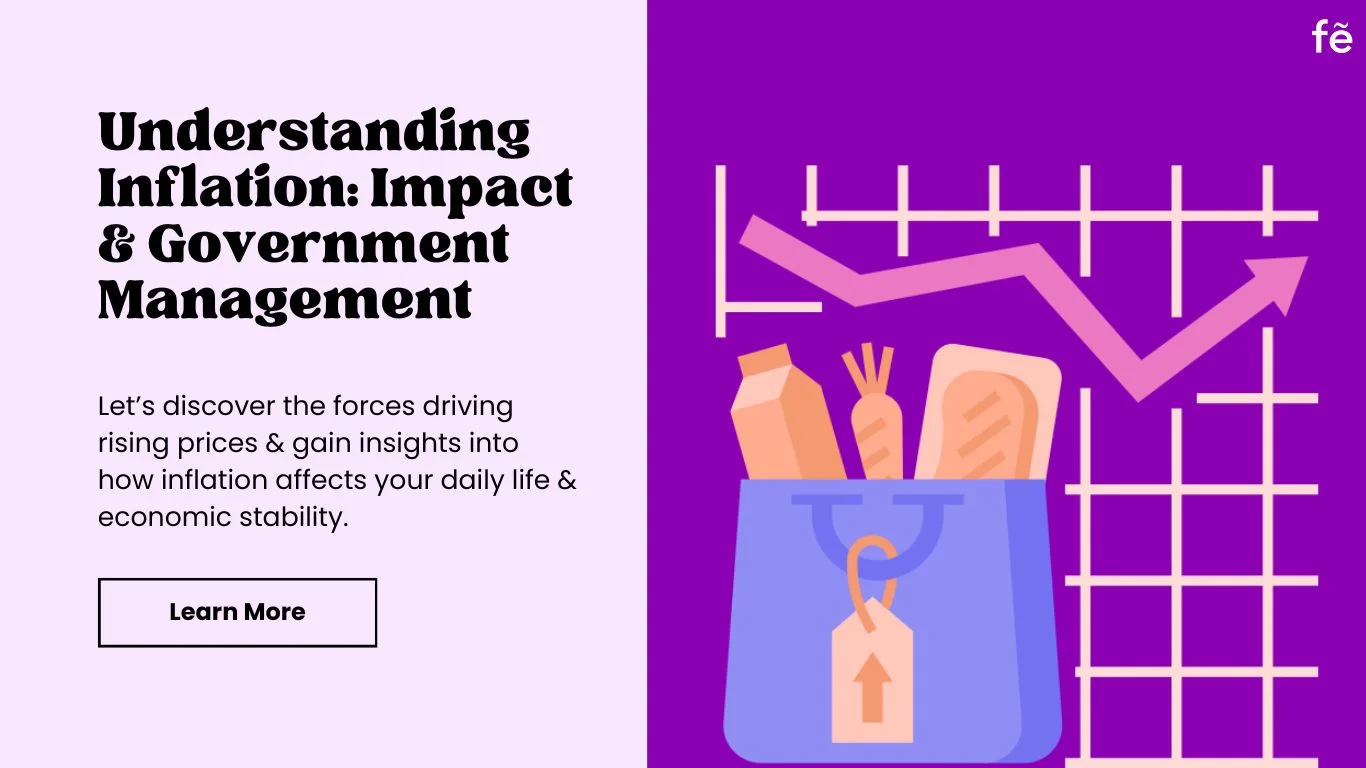
Buying your first home is one of the biggest dreams for many, and at a young age, you might already feel the excitement of turning this dream into reality.
But before you can unlock the door to your new house, you’ll need to tackle the first challenge: saving for a home down payment.
If you live in a city, are doing a job, and don’t know where to start, don’t worry—these first-time homebuyer tips are written just for you. Let’s break it down step by step so you can save for your dream home quickly and smartly!
But before we start, you have to understand what a down payment is and why we need it. So let’s start with the basics.
What is a Down Payment?
Generally, you don’t have to pay the entire amount at once when you buy a home. Instead, you have to pay a part of the cost as a down payment, and the rest can be taken as a home loan. In India, banks usually need 10-20% of the property value which is known as a down payment.
For example: If your home costs ₹50 lakh, you’ll need ₹5-10 lakh as the down payment. The remaining ₹40-45 lakh can be financed with a home loan.
Why A Down Payment Is Important For Homebuyers Like You?
Like me, you may often wonder, why banks don't give 100% loans for houses like they give for other things. Why do they put this down payment speedbreaker in the way? So, my friend, know that this decision is taken for our safety. Such as,
1. It Reduces Our Loan Amount
The larger your down payment, the less you need to borrow from the bank. For example, if your dream home costs ₹50 lakhs and you pay ₹10 lakhs as a down payment, you’ll only need a loan for ₹40 lakhs. A smaller loan means lower monthly EMI installments & less total interest paid over the life of the loan.
2. That Avoids Additional Costs
In India, banks charge extra fees or insurance premiums if you can’t make the minimum required down payment. A large down payment ensures you avoid such additional costs, keeping your In-flow and out-flow of the money manageable.
3. Make An Owner Of House Instantly
The down payment you make becomes your first chunk of equity in the property. Equity is the portion of the home you own, and it grows as you repay the loan. Building equity early can be a financial safety net if you need to borrow against your property in the future.
4. Lowers Financial Stress
With a substantial down payment, your EMI burden decreases, leaving more room in your budget for other expenses like furniture, maintenance, or emergencies. This way you enjoy your home without unnecessary stress.
5. Helps You Avoid Overborrowing
When you contribute a sizable down payment, you naturally limit how much you borrow. This prevents you from taking on high debt, which protects you against rising interest rates.
Now that you have gained the much-needed knowledge about Down Payment and its importance, let's move on to our main topic of the blog “How To Save For A Down Payment For House Quickly.”
10 Steps To Save Money For Down Payment Of Home
Step 1: Calculate How Much You Need
Before you start saving, figure out your target. Budgeting for a home purchase is big cheese for you. Chill out and just follow these steps:
Research Property Prices: Look at property rates in your preferred area.
Include Extra Costs: Add stamp duty, registration fees, and other expenses.
Set a Savings Goal: If you’re aiming for ₹50 lakh, plan for ₹10 lakh as a safe target for the down payment.
Step 2: Build a Solid Budget
A budget is the first and most important thing when saving money. It tells you where your money is going and helps you control it. Here are some steps to do it effectively,
Track Your Income and Expenses: Write down your income and all your monthly expenses, including rent, food, transport, and entertainment.
Cut Unnecessary Spending: Find areas where you can save. For example, reduce eating out, cancel subscriptions you rarely use, and buy only essentials.
Set a Monthly Savings Goal: For example, if you need ₹10 lakh in 5 years, means you have to save ₹16,667 every month.
Step 3: Open a Dedicated Savings Account
To avoid spending your house savings, open a separate savings account. You can even choose a recurring deposit (RD) or a high-interest savings account to grow your money while saving it.
Step 4: Make Your Money Work for You
Choosing the right place to park your savings for a down payment is crucial because you need to grow this money safely and steadily without taking the risk of losing it. These are some good options but choose the one that answers these questions,
“When do you need that money?”
“How much is your target interest rate?”
“The interest rate rate you get is enough to achieve your goal?”
“How much risk are you willing to take to grow your money?”
Here are some options to grow your money risk-free:
1. High-Interest Savings Accounts: It is ideal for short-term savings but generates relatively lower returns compared to other options. You can also activate the auto sweep option in your bank account to earn extra returns.
2. Fixed Deposits (FDs): FDs offer higher interest rates than savings accounts and are also safe. You can choose an FD duration that aligns with your savings goal.
3. Liquid Mutual Funds: These funds offer better returns than bank accounts and are suitable for short-term goals. They are relatively low-risk and allow easy withdrawal of funds when needed.
4. Short-Term Government Schemes: Consider investing in options like post office monthly income schemes or government bonds for steady and secure returns.
5. Mutual Funds (SIPs): Systematic Investment Plans in equity or hybrid funds can offer higher returns if your timeline is 3-5 years.
Step 5: Automate Your Savings
The best way to save consistently is to automate it. Set up an auto-debit from your salary account to your savings account or RD. This way, your savings happen automatically, without the temptation to spend.
Step 6: Avoid Other Debt
While saving for your house, avoid taking unnecessary loans or using credit cards for luxury purchases. High-interest debts can slow down your savings progress and can trap you in the debt snowball effect.
If you already have loans, first focus on paying them off quickly.
Step 7: Monetizing Your Other Assets
If you already own assets like land, an old vehicle, or even valuable items like gold, you can use them to boost your savings. Monetizing what you already own is the quickest way to gather a lump sum without affecting your regular budget. Here’s how:
Sell Unused Items: Do you have a second bike or car you barely use? Selling it can free up money to add to your down payment fund.
Rent Out Property: If you own a small piece of land or a room in your current home, consider renting it out for extra income.
Leverage Gold and Jewelry: Instead of leaving gold in a locker, you can either sell it or take a gold loan to add to your savings.
Step 8: Earn Extra Income
Boosting your income is another smart and practical way to save faster. Here are a few ideas:
Freelancing: Use your skills to work online as a writer, designer, tutor, or virtual assistant.
Side Business: Sell products online or start a small service-based business.
Part-Time Jobs: Deliver food, teach kids, or take up weekend gigs.
Step 9: Borrow Against Your Insurance Policies/PPF
If you’re close to your target but need a little extra to reach your down payment goal, borrowing against existing saving assets like life insurance policies or your Public Provident Fund (PPF) can be a smart option. Here’s how to use them:
1. Loan Against Insurance Policies: Many insurance policies allow you to take loans against surrender value. These loans typically have lower interest rates than personal loans and don’t require extensive documentation. Ensure you repay on time to avoid impacting your policy’s benefits.
2. Partial Withdrawals From PPF: If your PPF account is over 5 years old, you can withdraw a portion of your balance for purposes like buying a home. This is a tax-free withdrawal, making it a financially sound option.
3. Loan Against PPF Balance: Alternatively, you can borrow up to 25% of your PPF balance after three years of account opening. This loan must be repaid within 36 months, and the interest rate is typically 1% higher than the current PPF rate, which is still lower than most personal loans.
Step 10: Stay Focused and Motivated
Saving for a down payment requires patience and discipline. But in a world filled with constant distractions and tempting advertisements, it's all too easy to overspend. Here are tips to keep you on track:
Visualize Your Dream: Imagine yourself living in your own home—it’ll keep you motivated.
Track Your Progress: Review your savings every month to see how close you are to your goal.
Celebrate Milestones: Reward yourself when you hit smaller targets, like saving your first ₹1 lakh.
How to Save More While Living in a City?
City life especially in metro cities is more expensive than in rural areas due to its high vegetable prices, transportation cost, and modern lifestyle, but you can still save by being smart with your money:
Share Living Expenses: If you live with roommates, split your rent and utility bills.
Cook at Home: Eating out daily can wipe off your savings. Learn to cook meals at home, it can also be a fun activity or quality time with your family.
Use Public Transport: Save money by using buses, trains, or metro instead of taxis or private vehicles.
Limit Weekend Spending: Instead of costly outings, explore free or budget-friendly activities. If you go out weekly, you can also save a lot of money by converting it to monthly.
How Long Will It Take to Save ₹10 Lakh?
The time depends on how much you can save each month, here are some examples:
| Monthly Investment | Time of Saving |
| ₹10,000 | 8 Years |
| ₹16,667 | 5 Years |
| ₹25,000 | 3.5 Years |
If you use investing methods to save money like saving in FDs, and SIP in mutual funds, you can reach your goal with less time. Try our SIP calculator to calculate it yourself.
Is It Better to Pay Off Debt OR Save for a Down Payment First?
This is one of the biggest dilemmas when planning for a home purchase. Should you tackle your debts first or focus entirely on saving for the down payment? The answer depends on your financial circumstances. There are two situations you may have:
1. High-Interest Debt Comes First:
If you have high-interest debts like credit card balances or personal loans, prioritize paying them off first. These interest rates often exceed the potential returns from investments or savings, meaning you lose more by holding on to the debt.
2. Low-Interest Debt Can Wait:
For debts like education loans or car loans with manageable interest rates, you can balance both goals. Set aside a part of your income for the down payment while continuing to pay your monthly EMIs.
Can I Buy a House With No Down Payment?
In India, it’s rare to buy a house with no down payment because banks typically require you to pay 10-25% of the property value upfront. However, there are some alternatives to consider if you’re struggling to save for a down payment:
1. Buy Under Construction House:
If you buy a house while it is under construction, you don’t need to pay the full down payment all at once. Instead, you can pay it in smaller amounts over time as the construction progresses. This makes it easier to manage money and gives you more time to save or arrange the funds while your new home is being built.
2. Buy During Developer Offers:
During festive seasons, some developers offer schemes where they allow you to pay it in installments. These offers can ease the initial financial burden.
3. Borrow From Family or Friends:
This is a popular option in India, where close families often borrow money from each other at interest-free or low-interest rates. But, make sure to repay on time. Otherwise, you may lose the most valuable asset of your life, "relationships."
Keep in mind: A no-down-payment method can increase your overall financial stress. Saving for a down payment first is still the most financially rational decision.
Conclusion
Saving for a down payment on a house may seem challenging, but it’s entirely possible with the right plan. Start by setting a clear goal, create a budget, save consistently, and invest wisely. Small sacrifices today will bring you one step closer to your dream home.
Remember, the earlier you start, the easier it gets. Begin saving seriously, and soon, you’ll be proud to call yourself a homeowner. Good luck!






